Exploring Karnak Temple: A Photo Tour of the World's Largest Religious Site
As avid travellers, certain destinations mark our hearts, stirring within us a sense of awe, wonder, and reverence. Such is the case with the Karnak Temple, the world's largest religious site in the ancient city of Thebes in modern-day Luxor.
Spanning over 100 hectares, this labyrinthine complex of temples, chapels, obelisks, and statues is a testament to the impressive architectural and artistic achievements of the ancient Egyptians.
In this photo tour, we'll glimpse the majesty and grandeur of Karnak Temple, uncovering its mysteries, symbolism, and importance in the religious and cultural landscape of the Nile Valley.
So grab your camera, put on your explorer hat, and embark on a journey through time and space!
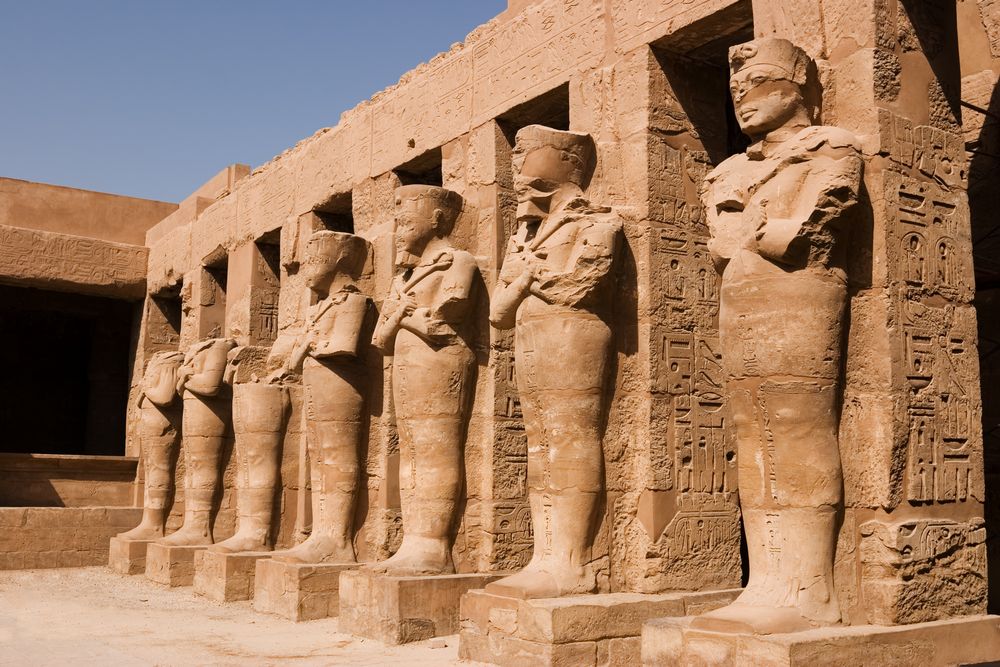
Karnak Temple is a significant ancient Egyptian monument
Karnak Temple, located in Luxor, is a significant ancient Egyptian monument that deserves to be explored. This massive temple complex is considered the largest religious site in the world, and it is an absolute must-visit for history enthusiasts, travellers, and anyone interested in ancient civilizations. Here are some key points that highlight the significance of Karnak Temple:
-
Rich history: Karnak Temple dates back to the Middle Kingdom era (approximately 2055-1650 BC) and witnessed additions and expansions by numerous pharaohs throughout the New Kingdom period (approximately 1550-1070 BC).
-
Sacred precincts: The temple complex is divided into several precincts, with the Precinct of Amun Ra being the most important. Amun Ra was the principal deity worshipped at this temple, and the Precinct of Amun Ra served as the religious and administrative centre of Karnak.
-
Royal contributions: Pharaohs Ramses II and Tutankhamun significantly contributed to Karnak Temple. Ramses II, known for his grand architectural projects, added many structures, while Tutankhamun restored and preserved several parts of the temple.
-
Lengthy construction: The construction of the Karnak Temple took several centuries to complete. As a result, the temple complex showcases different architectural styles and artistic elements from different periods, making it a treasure trove for archaeologists and historians.
Visiting Karnak Temple allows you to immerse yourself in the mystical world of ancient Egypt and appreciate the grandeur and magnificence of this architectural marvel. So, plan your trip, pre-book a qualified guide, and get ready to embark on a journey through time at the world's largest religious site.

Personal experience and inspiration to visit
Words cannot truly capture the awe-inspiring emotions that stirred within me throughout my entire visit to Karnak Temple. Being in the presence of such a monumental and ancient site left me feeling humbled and amazed at the ingenuity and dedication of the ancient Egyptians. As I walked through the immense courtyard, I couldn't help but imagine the bustling activity that must have occurred within these walls thousands of years ago. The intricate carvings and towering statues transported me back in time, and I felt a deep connection to the past. It was a profound reminder of how our ancestors have shaped our world and the importance of preserving and appreciating their legacies.
Another aspect that inspired me to visit Karnak Temple was witnessing history unfolding before my eyes. Knowing that this temple had been a centre of religious and political power for over two thousand years made me even more eager to explore its depths. The stories of pharaohs Ramses II and Tutankhamun, who contributed significantly to the temple's construction and restoration, only added to my fascination. Their legacies are etched into the very fabric of Karnak, and personally experiencing their influence was a once-in-a-lifetime opportunity.
In addition to the historical and cultural significance of Karnak Temple, the natural beauty of Luxor and its surrounding areas was another driving force behind my decision to visit. The chance to explore an ancient civilisation while surrounded by stunning landscapes made the experience all the more unforgettable. From the Nile River to the Valley of the Kings, Luxor is a treasure trove of archaeological wonders waiting to be discovered.
My experience and inspiration to visit Karnak Temple was deeply rooted in my curiosity and appreciation for the world's history. The opportunity to walk in the footsteps of ancient pharaohs and witness the grandeur of their achievements will stay with me forever. Whether you're a history enthusiast or seek to be inspired by the remarkable accomplishments of our ancestors, Karnak Temple is a must-visit destination that promises to leave an indelible mark on your soul.
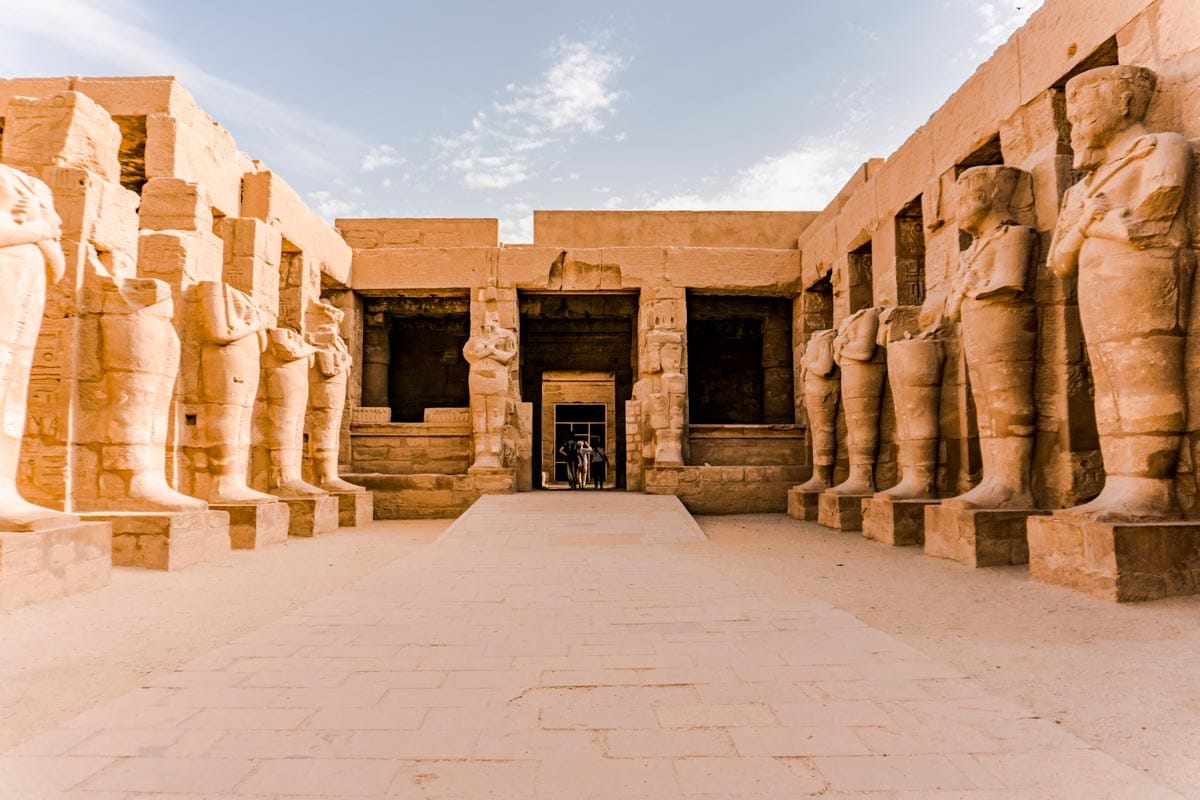
Importance of pre-booking a qualified guide
When planning a visit to Karnak Temple, it is highly recommended to pre-book a qualified guide. Not only will they enhance your overall experience, but they will also provide valuable insights and information that you might otherwise miss. Here are a few reasons why pre-booking a qualified guide is important:
-
Expert Knowledge: Qualified guides have in-depth knowledge about the history, architecture, and significance of Karnak Temple. They are trained to share accurate and fascinating information, ensuring you get a deeper understanding of this magnificent ancient Egyptian site.
-
Context and Interpretation: A qualified guide can provide the necessary context and interpretation to make the most of your visit. They will explain the religious and cultural significance of the various structures and artworks, giving you a richer appreciation for the site.
-
Personalized Experience: Guides can tailor the tour to your interests and preferences. Whether you want to focus on a specific aspect of the temple or explore it in a certain order, they can accommodate your requests and make the visit more enjoyable.
-
Access to Hidden Gems: Guides often have access to off-limits areas or lesser-known parts of the temple that are not open to the public. They can take you to these hidden gems and unlock secrets that would otherwise remain hidden.
-
Crowd Management: Karnak Temple can get crowded, especially during peak tourist seasons. A qualified guide can help you navigate the crowds, ensuring a smooth and enjoyable visit without feeling overwhelmed.
By pre-booking a qualified guide for your visit to Karnak Temple, you can make the most of this extraordinary religious site and gain a deeper appreciation for its historical and cultural significance.
Historical Facts about Karnak Temple
Date and purpose of construction
Welcome to the captivating world of Karnak Temple! Situated in Luxor, Egypt, this awe-inspiring ancient monument dates back to the Middle Kingdom period (2055-1650 BCE). The purpose of its construction was to serve as a sanctuary dedicated to the worship of Amun Ra, the chief deity of ancient Egyptian mythology. Spanning over 2000 years, Karnak Temple underwent numerous expansions and additions by various pharaohs, including Ramses II, Tutankhamun, and Amenhotep III. This architectural marvel stands as a testament to the power and religious devotion of the ancient Egyptians.
Here is an overview of the key information about the date and purpose of construction:
- Date: Karnak Temple was built during the Middle Kingdom period, from 2055 to 1650 BCE.
- Purpose: The temple was constructed as a religious sanctuary dedicated to the worship Amun Ra, the chief god of ancient Egypt.
- Devotion to Amun Ra: Amun Ra was considered the king of the gods and the creator of all things. The construction of the Karnak Temple manifested the ancient Egyptians' deep religious beliefs and desired to honour and appease their gods.
- Expansion and Additions: Over the years, various pharaohs contributed to the temple's development, adding structures and statues to showcase their devotion to Amun Ra. Notable contributions include those made by Ramses II, Tutankhamun, and Amenhotep III.
- Symbol of Power: Karnak Temple is a religious site and a representation of the power and influence of the ancient Egyptian pharaohs. It served as the centre of religious and political activities during its time.
Visiting Karnak Temple offers an incredible opportunity to step back in time and witness the grandeur of ancient Egypt. The intricate details and vastness of the temple reflect the artistic and architectural expertise of the ancient Egyptians. So, make sure to plan your trip well and immerse yourself in the rich history and spirituality that Karnak Temple offers.

The precinct of Amun Ra and its importance
As you embark on your journey through Karnak Temple, one of the most significant ancient Egyptian monuments, you will be captivated by the sheer grandeur and historical significance of the precinct of Amun Ra. This particular section of the temple holds great importance due to its association with the god Amun, believed to be the king of gods in ancient Egyptian mythology. Here are some key points to consider about the precinct of Amun Ra and why it is an essential part of your visit:
-
Spiritual Center: Amun Ra's precinct served as the temple complex's spiritual centre, where rituals and ceremonies honouring the god were conducted. It was believed that Amun Ra resided in this sacred area, making it an integral part of ancient Egyptian religious practice.
-
Symbol of Power: The precinct of Amun Ra was a symbol of the pharaoh's power and authority. Here, they would assert their divine right to rule and seek the favour of Amun Ra, the most revered deity of the time. As you explore the beautifully preserved ruins, you will witness the architectural marvels that reflect the pharaohs' desire to demonstrate their close connection to the gods.
-
Temples within a Temple: Within the precinct of Amun Ra, you will find several smaller temples dedicated to different deities. Different pharaohs constructed These temples over the years, each seeking to leave their mark and gain favour from the gods. The variety of architectural styles and artistic expressions within these temples make the precinct of Amun Ra a treasure trove of ancient Egyptian history and culture.
-
Cultural Significance: The significance of the precinct of Amun Ra extends beyond religious and architectural importance. It also sheds light on the political and cultural climate of ancient Egypt. This area witnessed the rise and fall of pharaohs, the influence of foreign invaders, and the cultural exchange that shaped Egypt's history.
Visiting the precinct of Amun Ra will undoubtedly enrich your understanding of ancient Egyptian civilization and its religious practices. Be sure to take your time to explore every corner, soak in the mystical atmosphere, and appreciate the extraordinary efforts invested in creating this monumental site. It is an experience that will stay with you long after you leave Karnak Temple.

Contributions of pharaohs Ramses ll and Tutankhamun
The Karnak Temple is not just any ancient Egyptian monument, it is a testament to the contributions made by pharaohs Ramses II and Tutankhamun. These two rulers played a significant role in the construction and expansion of the temple, leaving behind a legacy that is still admired today. Here are some notable contributions of these pharaohs:
- Ramses II: Ramses the Great reigned for an impressive 66 years and left an indelible mark on Karnak Temple. He constructed the famous hypostyle hall with its colossal columns, which are still standing strong. Ramses II also added mighty statues of himself, showcasing his power and grandeur.
- Tutankhamun: Although his reign was short-lived, Tutankhamun profoundly impacted Karnak Temple. He restored and renovated several structures, including the sacred lake and the precinct of Amun Ra. His efforts helped preserve the temple for future generations to admire and study.
The contributions of Ramses II and Tutankhamun demonstrate their dedication to the ancient Egyptian civilization and their desire to leave a lasting legacy. Visiting Karnak Temple allows you to witness firsthand the grandeur and magnificence of these pharaohs' accomplishments.
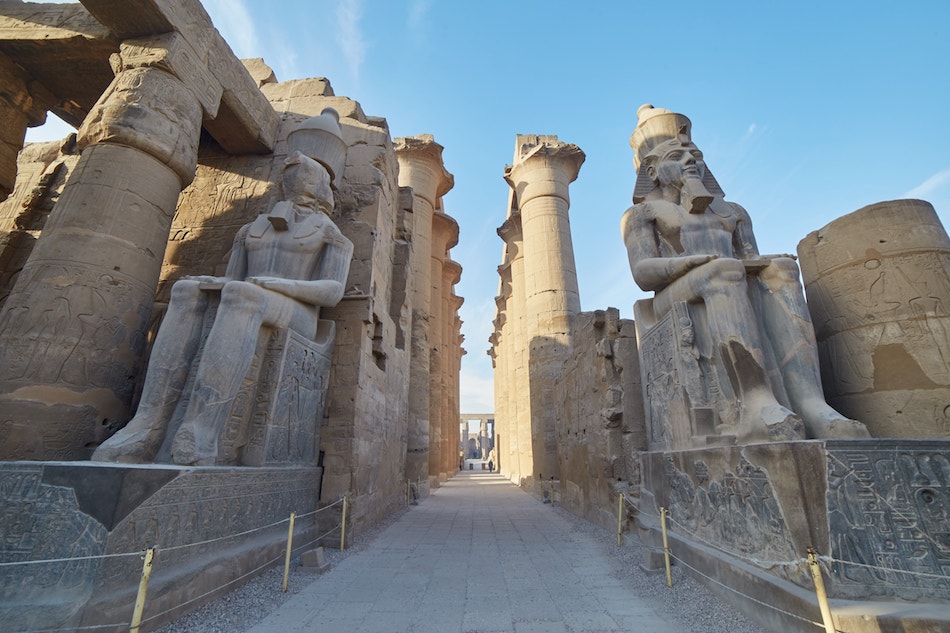
Time is taken to complete the temple
The construction of the Karnak Temple is a testament to the dedication and grandeur of the ancient Egyptians. The sheer size and complexity of the site make it hard to believe that it was completed in a relatively short period. The temple complex took approximately 2,000 years to reach its final form, with various pharaohs adding their touches and expansions. Here are some key points to understand the timeline of the temple's construction:
- The initial construction of Karnak Temple can be traced back to around 2055 BC during the Middle Kingdom. However, the most significant contributions came from the New Kingdom pharaohs, particularly during the reign of Amenhotep III and Ramses II.
- Pharaoh Ramses II, often regarded as one of the greatest Egyptian pharaohs, dedicated considerable time and resources to the Karnak Temple. He erected numerous massive statues and structures, further enhancing the grandeur of the complex.
- Tutankhamun, the famous young pharaoh, also left his mark at Karnak Temple. Although his reign was relatively short, he contributed substantially to the temple's construction and refurbishment of certain areas.
- Despite the continuous construction over centuries, the final form of Karnak Temple was completed during the Ptolemaic period, around 30 BC.
The completion of the Karnak Temple showcases the long-standing dedication and commitment of the ancient Egyptians to their religious beliefs and the recognition of their pharaohs' divine status. Visiting this magnificent site allows you to witness the grandeur of ancient Egypt and provides a unique opportunity to delve into the rich history and culture of this great civilization.

Highlights of a Visit to Karnak Temple
Entrance and introductory talk
As you approach the magnificent Karnak Temple, anticipation builds with every step. The entrance is grand, with its towering gates adorned with intricate carvings. Once inside, you are greeted by a knowledgeable guide who provides an introductory talk, setting the stage for the incredible journey you are about to embark on.
The guide skilfully weaves a narrative that brings the temple's history to life. Their passionate storytelling transports you back to when this temple was at the height of its glory. They explain the significance of Karnak Temple as a significant ancient Egyptian monument, illustrating its immense religious importance for an ancient civilization.
During the introductory talk, the guide delves into the temple's rich history, shedding light on the date and purpose of its construction. You learn about the contributions of pharaohs Ramses II and Tutankhamun, who left their mark on this awe-inspiring structure. The guide also highlights the importance of the precinct of Amun Ra, a sacred area within the temple grounds.
As you absorb all this information, you can't help but feel a sense of wonder and curiosity. The guide's deep knowledge of Karnak Temple allows them to share captivating stories about the time it took to complete the temple and the painstaking efforts of generations of craftsmen and builders.
The introductory talk is the perfect precursor to the adventure in the temple courtyard. It sets the stage for the statues and structures that await, the magnificent Temple of Ramses III and Queen Nefertari and the breathtaking Great Hypostyle Hall with impressive columns.
The entrance and introductory talk at Karnak Temple is essential to the experience. They provide valuable insights into the temple's history and significance, whetting your appetite for the wonders you will witness. So, come prepared to be enthralled and embark on a journey through time as you explore the world's largest religious site.

B. Statues and structures inside the temple courtyard
As you wander through the expansive temple courtyard at Karnak, you will be awe-struck by the majestic statues and impressive structures that surround you. Here are some highlights that you shouldn't miss during your visit:
• The Avenue of Sphinxes: As you enter the temple courtyard, you will be greeted by a procession of sphinxes on either side of the pathway. These mythical creatures, with the body of a lion and the head of a human, provide a grand entrance to the temple.
• Obelisks: Scattered throughout the courtyard, you will find several towering obelisks. These tall, slender structures were erected as symbols of power and dedication to the gods. Take a moment to admire their intricate carvings and hieroglyphics.
• Colossal Statues: Keep your eyes peeled for the massive statues that line the courtyard. These larger-than-life representations of pharaohs and gods were meant to inspire awe and reverence. Take a moment to appreciate the craftsmanship and the level of detail that went into creating these imposing figures.
• Sacred Lakes: Within the temple precinct, you will find several sacred lakes that were used for religious rituals and ceremonies. These serene bodies of water, surrounded by lush greenery, provide a tranquil respite from the bustling crowds. Don't forget to capture some stunning photographs reflecting the temple's beauty.
As you explore the temple courtyard at Karnak, make sure to take your time and soak in the incredible statues and structures that tell the story of ancient Egypt's religious devotion. These magnificent works of art are a testament to the power and ingenuity of the civilization that created them.

Temple of Ramses lll and Queen Nefertari
The Temple of Ramses III and Queen Nefertari is a must-visit site within the vast Karnak Temple complex. As you explore this section, you will be captivated by the grandeur and precision of ancient Egyptian architecture. Here are some highlights to look out for:
- The Temple of Ramses III: Dedicated to the powerful pharaoh Ramses III, this temple is a testament to his reign and the religious significance he held. Admire the intricate carvings on the walls, depicting scenes from his victories and offerings to the gods.
- Queen Nefertari's Temple: Built in honour of Queen Nefertari, the principal wife of Ramses II, this temple showcases the beauty and importance of this influential queen. Marvel at the detailed reliefs depicting her divine status and role in shaping ancient Egyptian culture.
Both temples are adorned with elaborately carved columns, statues, and hieroglyphs, preserving the stories and beliefs of the ancient Egyptians. The craftsmanship and attention to detail are truly awe-inspiring. Don't forget to take a moment to appreciate the preserved colours on the walls, which provide a glimpse into the vibrant world of ancient Egypt.
Visiting the Temple of Ramses III and Queen Nefertari will give you a deeper understanding of the culture and history of this ancient civilization. It is a humbling experience to walk in the footsteps of pharaohs and queens and witness the grandeur of their temples. So, include this section in your itinerary when exploring the awe-inspiring Karnak Temple complex.
As with any historical site, it is recommended to have a knowledgeable guide who can provide insights and contextualize the significance of the structures you encounter. They can enhance your experience by sharing interesting stories and answering any questions. Pre-booking a qualified guide is highly advised to make the most of your visit to the Temple of Ramses III and Queen Nefertari.
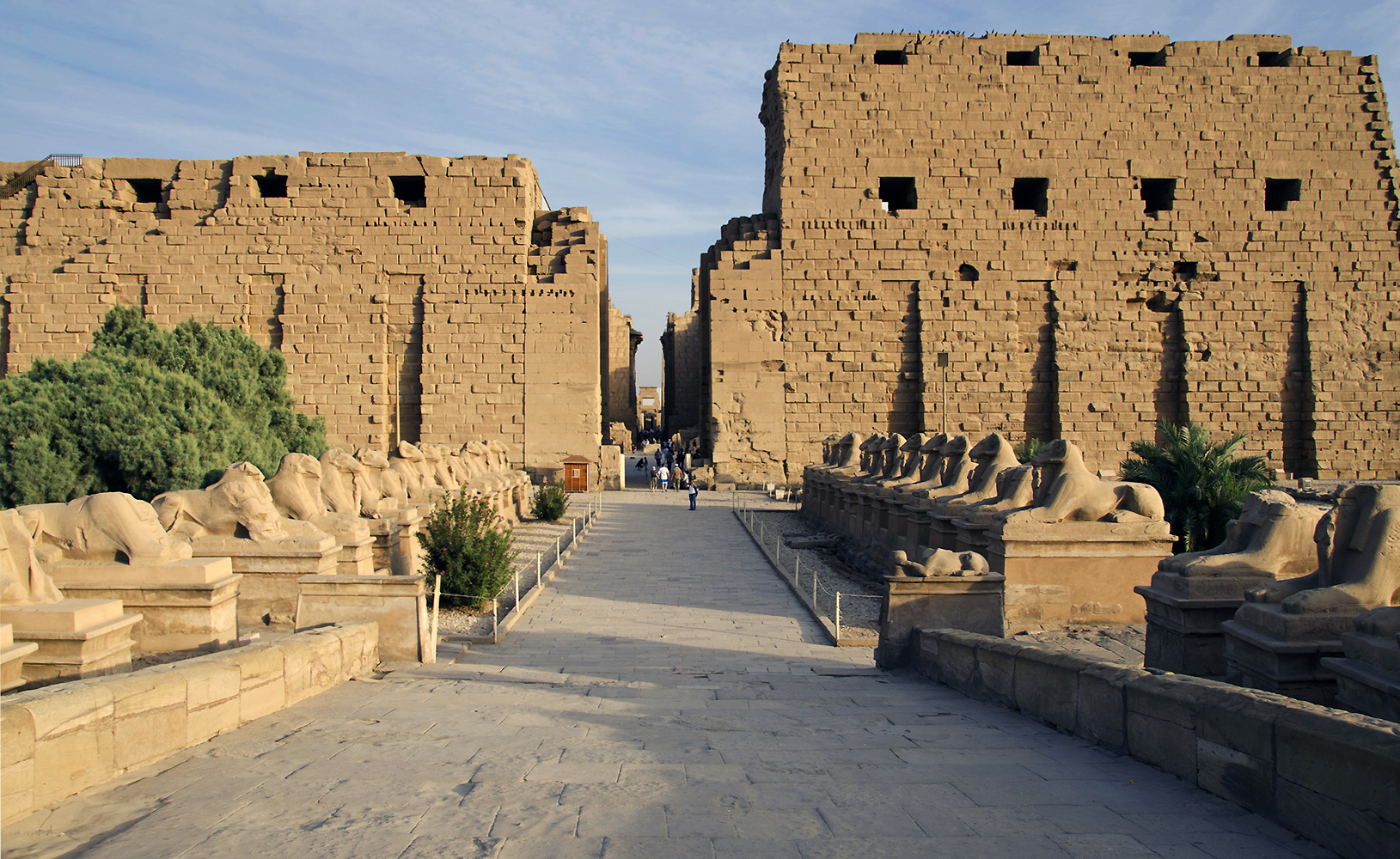
The Great Hypostyle Hall, with its impressive columns
As you step into the magnificent Karnak Temple, one of the highlights you definitely shouldn't miss is the awe-inspiring Great Hypostyle Hall. This massive hall is adorned with towering columns that will leave you breathless. Here's why you should be sure to spend some time exploring this architectural wonder:
-
Imposing Columns: The Great Hypostyle Hall is home to an impressive array of columns, with some reaching heights of over 22 meters. These colossal structures are beautiful to behold and serve a practical purpose in supporting the temple's roof. As you walk among them, you can't help but marvel at the craftsmanship and engineering prowess of the ancient Egyptians.
-
Intricate Hieroglyphics: The column shafts are adorned with intricate hieroglyphics, depicting various scenes from ancient Egyptian mythology and history. Each column tells a unique story, preserving the rich cultural heritage of the civilization. Take your time to examine these detailed carvings and imagine the tales they convey.
-
Play of Light and Shadow: The sheer size and arrangement of the columns create a mesmerizing play of light and shadow. As sunlight filters through the openings in the roof, it casts enchanting patterns on the floor and columns, creating a magical atmosphere. Capture these ethereal moments on camera or allow yourself to be immersed in the enchantment of the surroundings.
-
Acoustic Phenomenon: One of the most intriguing aspects of the Great Hypostyle Hall is its exceptional acoustics. The columns' design and the hall's spaciousness create a natural reverberation that amplifies sound. It is said that even the softest whisper can be heard across the vast space. Don't hesitate to test it with a friend or a guide and experience this fascinating acoustic phenomenon.
Visiting the Great Hypostyle Hall at Karnak Temple is a truly unforgettable experience. The sheer grandeur of the columns, combined with the intricate hieroglyphics and captivating play of light and shadow, makes it a must-see attraction. So, don't forget to include this breathtaking hall in your itinerary and be prepared to be transported back in time to the ancient world of the pharaohs.

Karnak Temple Light and Sound Show
Overview of the show and its storytelling
As you embark on your journey through Karnak Temple, be prepared to be enthralled by the magical storytelling of the light and sound show. This awe-inspiring spectacle, held every evening, takes visitors on a mesmerizing journey through the history and mythology of ancient Egypt. The show uses a combination of sound effects, projected images, and narration to transport you back in time and immerse you in the ancient world. With the temple as a stunning backdrop, the show's storytelling and visual effects breathe life into the walls and columns, making the ancient gods, pharaohs, and events come alive before your eyes.
The show's storytelling is based on historical records and archaeological findings, providing an accurate portrayal of the temple's significance and the associated stories. The show explores ancient Egyptian myths, legends, and religious beliefs through vivid imagery and captivating narration. It delves into the epic battles, the crowning of pharaohs, and the rituals within the temple's sacred precincts.
One of the show's highlights is the depiction of the deities and pharaohs who played significant roles in constructing and preserving this magnificent temple. You will witness the divine presence of Amun Ra, the supreme god of the Egyptian pantheon, whose temple within Karnak stands as a testament to his eminence. The show also pays homage to the reigns of pharaohs Ramses II and Tutankhamun, showcasing their contributions and legacy within the temple complex.
Experiencing the light and sound show at Karnak Temple is a profound and unforgettable encounter that will deepen your appreciation for ancient Egyptian history and culture. The combination of storytelling, visual effects, and the temple's grandeur creates a truly immersive experience. You will leave with a sense of wonder and an enriched understanding of the ancient civilization that once thrived in this sacred place.
If you plan to visit Karnak Temple, I highly recommend attending the light and sound show. It is an evening filled with magic, history, and sheer beauty that is not to be missed. Immerse yourself in the tales of gods and pharaohs, and let the ancient world enchant you as the walls of the temple come alive. It's an experience that will leave a lasting impression and make your visit to Karnak Temple unforgettable.
So, add the light and sound show at Karnak Temple to your itinerary and let the mesmerizing storytelling transport you back in time to the magnificent world of ancient Egypt.

Personal experience and recommendations
When exploring the Karnak Temple, I can't stress enough how important it is to have a personal guide. I was lucky to have pre-booked a qualified guide, which made all the difference in my experience. Not only did they provide invaluable historical and cultural information, but they also brought the temple to life with their storytelling. They knew the ins and outs of the site and were able to point out intricate architectural details that I may have missed on my own. Having a guide also meant I didn't have to worry about navigating the complex maze of structures, as they led the way and ensured I didn't miss any hidden gems.
One of the highlights of my visit was exploring the Temple of Ramses III and Queen Nefertari. The intricate carvings and vibrant colours of the temple's walls were awe-inspiring. It felt like I had stepped back in time and witnessed ancient Egypt's grandeur. The Great Hypostyle Hall was another sight to behold. With its towering columns and beautifully preserved hieroglyphics, it was a testament to the incredible architectural achievements of the ancient Egyptians.
I highly recommend attending the sound and light show at Karnak Temple. It was a mesmerizing experience that enhanced my understanding of the temple's history and significance. The combination of captivating storytelling, dramatic lighting, and haunting music transported me to another world. It truly brought the temple to life in a unique way.
If you're planning a trip to Karnak Temple, I would also recommend exploring the surrounding area. Luxor is a treasure trove of ancient civilization, with countless temples and archaeological sites waiting to be discovered. Don't miss the opportunity to immerse yourself in the rich history of the Nile Valley.
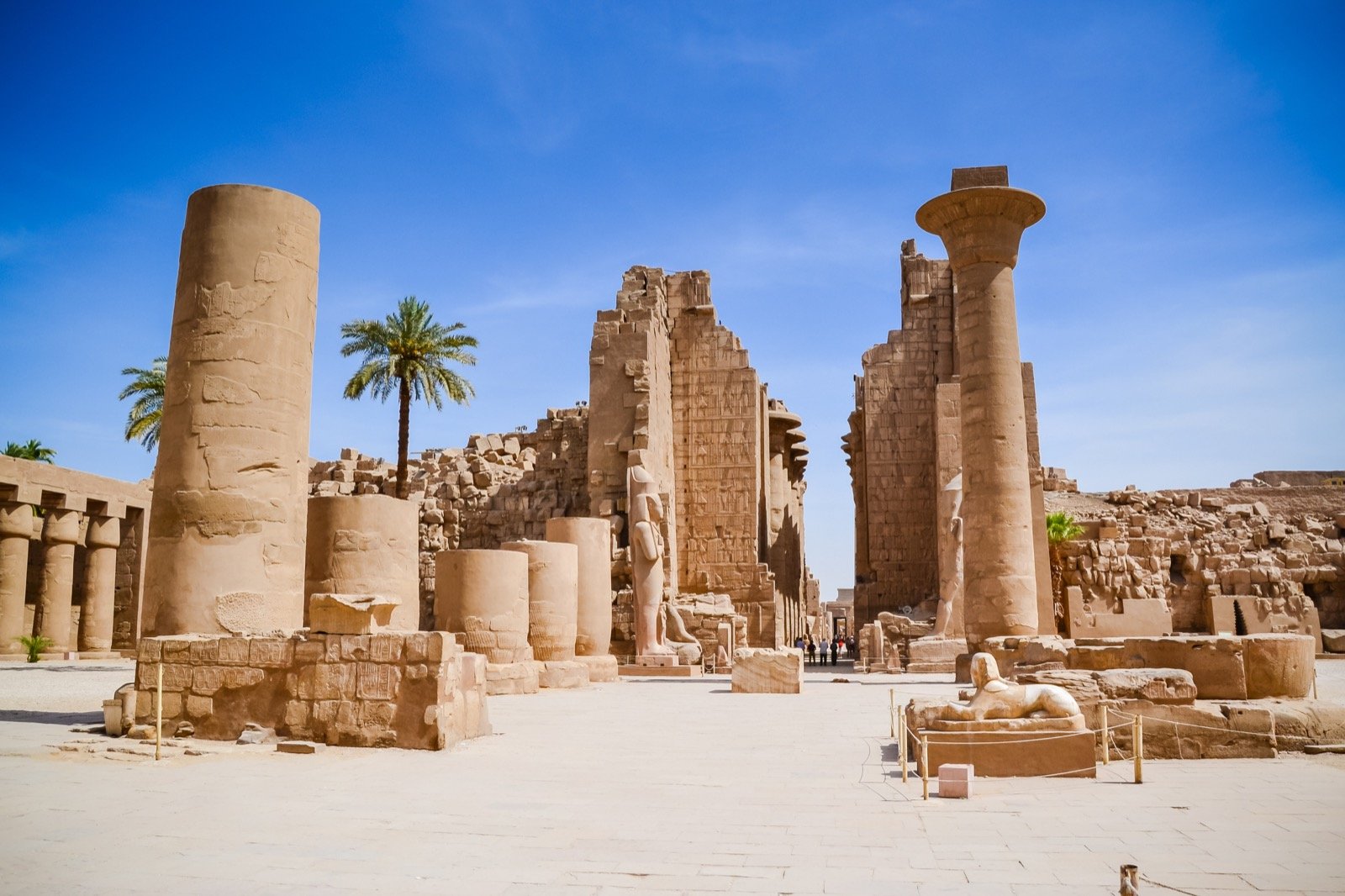
Recommendation to visit Luxor and explore the ancient civilization
If you're planning a trip to Egypt, visiting the Karnak Temple in Luxor should be at the top of your list. But why stop there? Luxor is a city that is rich in ancient history and offers many sites to explore. Here are some recommendations for your visit to Luxor and to fully immerse yourself in the ancient civilization:
-
Valley of the Kings: This is the burial ground of the pharaohs, where you can visit the tombs of great rulers like Tutankhamun and Ramses II. The intricate carvings and paintings inside the tombs are awe-inspiring and give you a glimpse into the beliefs and culture of the ancient Egyptians.
-
Temple of Hatshepsut: This temple is dedicated to the only female pharaoh of Egypt, Hatshepsut. The stunning architecture and the stories of her reign add a fascinating dimension to your exploration of Luxor.
-
Luxor Temple: Located right in the heart of the city, Luxor Temple is another must-visit site. The colossal statues, massive columns, and intricate carvings make it an impressive sight that transports you back in time.
-
Hot Air Balloon Ride: For a unique perspective of Luxor and its surrounding areas, consider taking a hot air balloon ride. You'll get a bird's-eye view of the temples, pyramids, and the majestic Nile River.
-
Visit the Luxor Museum: This museum houses a vast collection of artefacts from the ancient Egyptian era. From statues of pharaohs to intricately preserved mummies, the Luxor Museum offers a comprehensive overview of the civilization that once thrived here.
Luxor is a city that promises to immerse you in the wonders of ancient Egypt. So, allocate enough time to explore and absorb its rich history truly. Whether you enjoy wandering through ancient ruins or marvelling at the grandeur of temples, Luxor is a destination that will leave you in awe.
